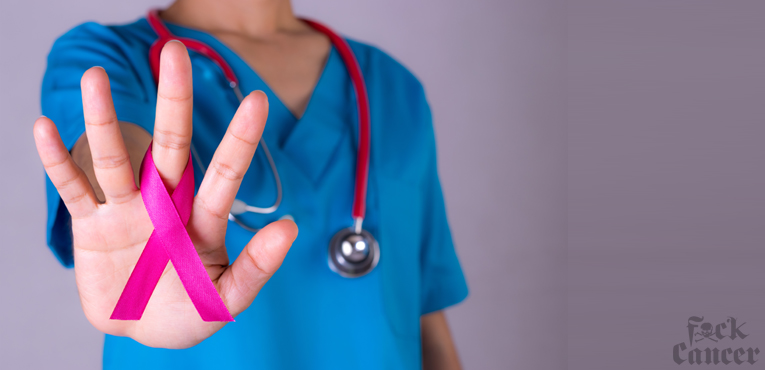
In breast cancer, abnormal genes cause breast cells to grow uncontrollably and not die off as they normally would.
If these cells grow slowly and do not invade other tissues, they cause benign tumors. These lumps are not usually dangerous to health.
When abnormal cells grow more rapidly and begin to invade surrounding tissues, they form cancerous tumors. These lumps pose a serious risk and can spread, creating new tumors throughout the body.
According to BreastCancer.org, 1 in 8 women in the United States will experience invasive breast cancer over their lifetime. Researchers estimate that in 2018, over 266,000 women will be diagnosed with invasive breast cancer in the U.S. Approximately 40,920 women are expected to die of the disease in 2018 in the U.S.
Breast cancer is one of the most common forms of cancer in American women, accounting for about 30 percent of new cancer cases in 2017. Men face a much lower risk, and the lifetime risk in the U.S is around 1 in 1,000.
Symptoms and Early Signs
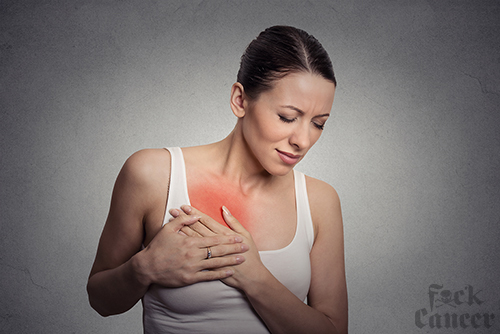
Breast cancer can often be difficult to detect in its early stages. While some with breast cancer will experience lumps, pain, swelling, and skin changes, others may experience no obvious symptoms.
The American Cancer Society reports that most breast cancer cases first present as a new mass or lump. A wide range of other symptoms may also appear, including:
- breast or nipple pain
- swelling, irritation, or color change of the breast or nipple
- nipple retraction
- a new mole or change in an existing breast or nipple mole
- a sore on the breast or nipple that will not heal
- tender or enlarged glands under the arm or in the neck area
- nipple discharge
- change in the overall size, shape, or appearance of the breast or nipple
- a hoarse, persistent cough
- change in appetite
- difficulty swallowing
- pain after meals
- painful or difficult urination or bowel movements
- blood in the urine or stool
- unexplained weight gain or loss
- night sweats
- a general feeling of weakness or tiredness
The National Cancer Institute offers a risk assessment tool to help guide health professionals.
What do breast lumps feel like?
The feel of a breast lump depends on its cause, location, and growth. They can vary greatly from painful, hard, and immobile to soft, painless, and easily moveable.
According to BreastCancer.org, lumps are most likely to be cancerous if they do not cause pain, are hard, unevenly shaped, and immobile.
Fibroadenoma lumps tend to be painless, easily movable, smooth, rounded and can disappear on their own. Breast cysts are smooth but firm. Breast abscesses and mastitis usually cause painful, swollen lumps, and are often accompanied by a fever and or redness around the affected skin.
Most early breast cancers are diagnosed on screening mammograms before a lump can be felt. Mammograms are an effective method for detecting breast cancer. However, mammograms do not detect breast cancer 100 percent of the time.
The most difficult part of early detection is that changes and symptoms might or might not occur. That is why regular screening is so important.
Self-examination tips
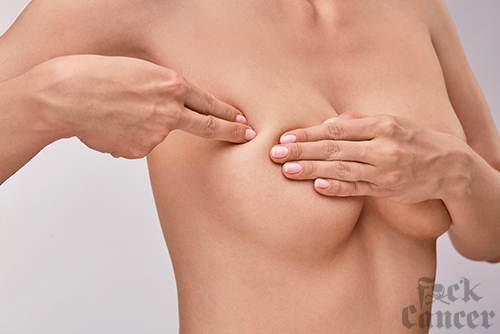
The National Breast Cancer Foundation encourage people to do self-examinations at home every month to look for breast changes.
They suggest doing this in three stages: In the shower, in front of the mirror, and lying down.
How to feel for abnormalities
The shower is the ideal location to check for breast lumps, but a person can perform this stage of the exam just about anywhere.
Using the pad of the fingers, move in a circular motion from the inside, near the nipple, outward. People should feel for changes like lumps, thickenings, or pain.
Cover the entire breast area from the cleavage line to the surrounding chest, collarbone, and armpit area. Do this both from side to side and up and down.
Apply light pressure closer to the surface of the breast and nipple. Medium and firm pressure is needed to properly check deeper tissue and tissue closer to the rib cage and back muscles. The nipple should also be squeezed, checking for discharge, lumps, and pain.
Carry out the same routine while lying down, allowing the breast tissue to rest evenly against the chest wall.
How to look for abnormalities
Standing in front of a mirror, people should look at the overall appearance of the breasts and nipples. Here are some questions to think about:
- Are they similar in size, shape, or height?
- Is one a different color than the other?
- Are there any visible skin lesions, marks, color changes, or moles?
- Are there any signs of swelling, lumpiness, pitting, or contour changes?
- Are the nipples facing outward or inward?
People should run through this checklist with their arms both at their sides and above their head.
Next, people should press their palms firmly on their hips and flex their chest muscles. It is rare for two breasts to be identical, but it is important to look for differences between each.
Many health authorities no longer recommend carrying out a routine physical self-examination, but anyone who notices a change in their breast tissue and feels concerned should see a doctor for further investigation.
However, having an idea of the normal size, shape, appearance, and feel of the breasts can help a person be aware of any changes.
Other conditions that cause breast lumps
According to the British National Health Service, the vast majority of breast lumps are noncancerous. While some can be painful and cause breast changes, benign lumps are not considered to be life-threatening. They may require treatment or surgery, however.
Benign breast lump conditions include:
- fibroadenomas
- fibrocystic breast disease
- ductal or lobular hyperplasia
- cysts, abscesses, or infection
- mastitis
- lipomas
- intraductal papillomas
- fat necrosis
- duct ectasia
- complex lesions or scars from past breast biopsies
Causes and risk factors
According to the American Cancer Society, most breast cancers are ductal cancers, beginning in the cells that carry milk to the nipple. Lobular cancers, starting in the milk-producing glands, are less common.
BreastCancer.org state some 5 to 10 percent of all female breast cancer cases in the U.S. are hereditary. This means that an abnormal gene is passed on from parent to child, which is often the BRCA1 or BRCA2 mutation
Having abnormal copies of these genes raises the risk of breast, ovarian, and other cancers.
Around 85 percent of breast cancer cases occur in women with no family history of the condition. Age, gender, and ethnicity are the biggest risk factors. For women, the risk increases with age, and white women are at a higher risk than women of other races.
The National Cancer Institute reports that the odds of developing breast cancer increase with age. They state that the 10-year risk of developing breast cancer is 1 in 227 for a 30-year-old woman and 1 in 26 for a 70-year-old woman.
The most significant increase in these odds occurs during the period between 30 and 50 years, rising from 1 in 227 to 1 in 42.
Breast cancer in men
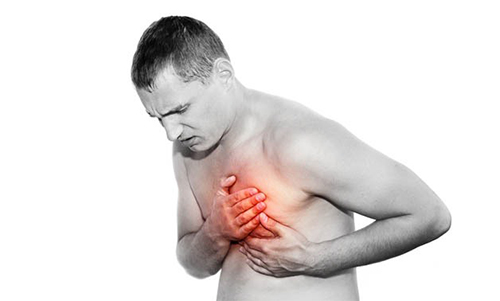
The ACS estimates 2,550 men will receive a diagnosis of invasive breast cancer, and some 480 men will die of the condition in 2018.
The rate of breast cancer in white men in the U.S. is roughly 100 times less than in white women, and about 70 times lower in black men as compared to black women.
The prognosis for breast cancer in men is similar to the prognosis in women at the same stage of diagnosis.
However, men often receive a diagnosis at a later stage, possibly due to the lack of awareness about breast cancer in men.
When to see a doctor
If any of the above signs or symptoms occur, people should see a doctor.
Women should also ask their doctor about regular screening, as some changes may not be detectable in the early stages.
Guidelines from the American College of Physicians recommend the following:
- Women should start speaking to their doctor about breast cancer screening from the age of 40 years.
- Women with an average risk should have a mammogram every 2 years from the age of 50–74 years.
Individual risk factors may mean that some women need additional screening. A doctor will advise on risk factors, how often to screen, and when to start.
It is worth noting that different authorities, such as the American Cancer Society, have different guidelines. Each person should speak to their doctor about the best option for them.
The most common tools for analyzing breast lumps are clinical breast exams, mammography, breast MRIs, and biopsies.
Many breast lumps are harmless or result from conditions other than cancer, but only a doctor can determine this.
Source: MedicalNewsToday.com, What does breast cancer feel like?, by Jennifer Huizen, https://www.medicalnewstoday.com/articles/313490.php, July 25, 2018
